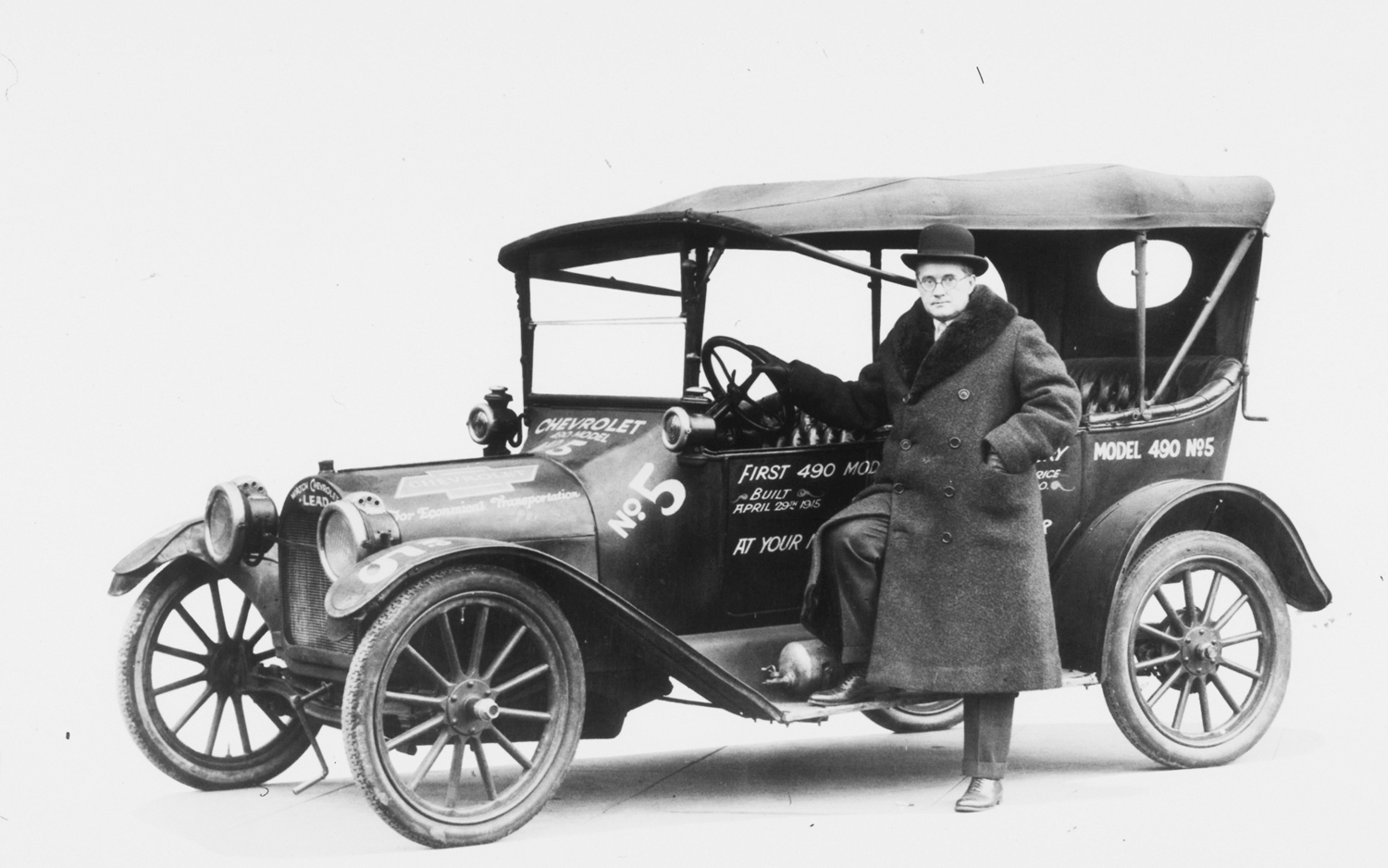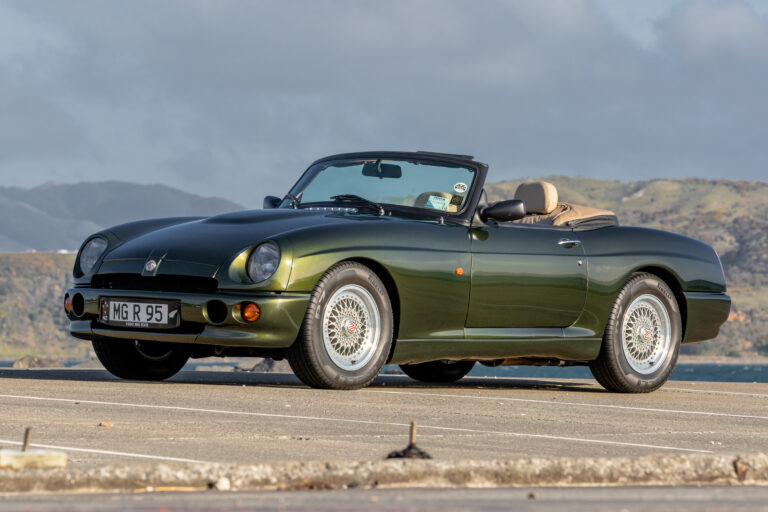Once again, Graeme Rice looks back on the motoring worlds of 100, 75, 50, and 25 years ago
January 1915

Chevrolet’s Model T rival — the Four-Ninety
Thinking of starting the New Year with a new motor? In spite of the war in Europe failing to finish by Christmas, there were still plenty of cars to choose from. Humber’s Light Car was described as being ideal for business or pleasure, perfectly designed, beautifully finished, with low petrol consumption and the ability to glide along smoothly at 45mph. Argyll may have been in their death throes, but assured buyers the new sleeve valve 15/30hp possessed beauty, grace, and comfort. For £650 one could have the streamline body with detachable wheels, speedometer, and CAV electrics, with nickel-plated fittings.
Billy Durant, having latched onto the name of poor old ousted Louis Chevrolet to sell a new line of Model T competitors that would eventually enable him to force his way back into General Motors, launched his Chevrolet Four-Ninety on New Years Day. For anyone who didn’t already know, US$490 was the price, in January 1915, of Henry Ford’s all conquering but aging Model T. Best things about the Chevrolet were its proper gearbox, electric lights, and Cadillac-style electric starter. Production was set to start as soon as the Tarrytown factory was completed. By June 19 the company had received 46,611 orders and a delighted Durant wrote to a friend, “Since June 19 we have taken orders for 1000 cars per day.”
Henry Ford reduced the price of the Model T by US$50 down to US$440, as his response to the Chevrolet challenge.
Was the magneto on the way out? Yes according to a report from America where its use on new models had dropped from about 80 to 50 per cent and was still going down. Scoring the big hit was the all–electric system utilizing the electric lighting dynamo and starter motor with the excellent storage batteries of the day. The writer expressed the hope that the British car makers would adopt the American system as then they could rid themselves of the bond to the Bosch magneto which was one of the things ‘Made in Germany’ of which they had too many.
Tales of heroism from the Fabrique Nationale (FN) factory in the Belgian city of Liège. Arriving in the town, the Germans called the managers to a meeting and told them to get the factory working again. The Belgians refused and were given another five minutes to convince their workers to get working or they would be shot. Again the Belgians refused. The Germans, some of whom were gentlemen and recognized bravery apparently, offered a massive payment to the Belgians to get the factory functioning again or face imprisonment — needless to say, they were imprisoned.
January 1940

Sir Malcolm Campbell and Lady Dorothy Campbell
Schoolboy hero and very rich man, Sir Malcolm Campbell was finally divorced from his wife, Lady Campbell. According to NZ Truth, Lady Campbell was alleged to have had liaisons with the Hon Brian Lewis (aka Lord Essendon) and Mr Angus Murdoch Keith.
In her defence, Lady Campbell stated that she was the subject of neglect between 1931 and 1934, and Sir Malcolm had been a naughty chap in spite of her asking him not to.
General Motors celebrated the production of their 25 millionth car, a Chevrolet Master DeLuxe Town Sedan. A beaming GM President William S Knudsen, and General Manager of Chevrolet Mr M E Coyle were photographed beside the landmark vehicle. Chevrolet responded to the honour by selling 895,734 units of which 775,073 were cars, a far cry from Harry Bennett’s machinations at Ford, seeing the once dominant family firm’s car sales dropping to 542,000. They used to make that many Model Ts in three months!
At the same time as they were celebrating their 25 millionth milestone, GM were pragmatic enough to decide to drop the La Salle, Cadillac’s running mate since 1927. Most thought it was because of the increasing appeal of Buicks as upmarket cars, and the lower priced Cadillacs sandwiching La Salle between them with nowhere to go. Others had witnessed the boom Packard had experienced from labelling their six-cylinder entry level model series as Packards, the genuine article, without dreaming up some companion make label to disguise the fact.
January 1965

Timo Makinen (left) and Paul Easter reunited with their 1965 Monte Carlo-winning Mini
Timo Makinen drove a 1275cc Mini-Cooper S into first place overall in the Monte Carlo Rally, scoring a second successive victory for the diminutive BMC brick. Eugen Böhringer was second in a Porsche 904GTS, with the remarkable Pat Moss, sister of Stirling, third in her Saab 96 — highest place ever for a female crew.
Long time Rootes driver, Peter Harper, took fourth overall and first in the GT Class over 2500cc in his Sunbeam Tiger, while fifth and sixth were Linge in a Porsche 911, and Roger Clark with a Rover 2000.
The Monte Minis were fitted with five extra driving and fog lights and had aluminium bonnets and boot-lids. Rootes had entered Hillman Imps fitted with twin Stromberg carbs and bigger 998cc engines. Each Imp had two washer systems for the windscreen and one for the headlamps.
Ford fitted their factory team Cortinas with twin 40DCOE Weber carbs, four spare wheels and extra fuel tanks giving 16 gallons in total — 72 litres.
Strangely two of the Triumph 2000s were right hand drive but one was fitted out as left hand drive. All three were fitted with Weber 24DCOE carbs.
Jim Clark had a good month, winning the South African GP, leading from start to finish for all 208 laps. Well astern of him were John Surtees in a Ferrari, dicing with Graham Hill and his BRM for second place. Surtees finally prevailed. Clark went on to win three of the NZ rounds of the Tasman Championship, though Graham Hill in a Brabham won the NZGP.
Donald Campbell fatefully turned his attention back to the World Water Speed record once the FIA admitted jet propelled wingless fuselages as legitimate cars and officially listed their records. Campbell could see wheel driven cars would never be fast enough to capture the glamour that went with being the fastest overall, not merely the fastest in class.
Cadillac finally, after a series of systematic prunings, lost its trademark tailfins. Why did it take so long to adopt the straight-through look the rest of the industry had switched to several years earlier? Some suggest Cadillac invented the tailfin in response to Harley Earl’s postwar demand that cars should generate as much excitement as aeroplanes, so Cadillac imagery was modelled initially on the twin tailfins of the WW2 Lightning P38 fighter, and later, on rockets and missiles. Others said it was an attempt to lend some dignity and stateliness to the marque by doing a Rolls-Royce and going for evolution instead of revolution. In any case it worked as the de Ville, Calais, Eldorado and Fleetwood range, complete with the new Brougham with a vinyl roof would see 1965 sales nudge 200,000 for the first time in Cadillac’s history.
January 1990

No political prisoners here! Workers at Skoda’s Mlada Boleslav factory
New Zealand was clogged with sweaty Skoda fans, each one following the unfolding story of the month — had Skodas been built by prison labour under the Communist regime? On the third of the month, Skoda importer Derek Winterbottom claimed he’d visited Skoda factories in Mlada Boleslav and seen no evidence of prisoners working on the cars. “I’m not saying they weren’t there,” said Mr Winterbottom, “I’m just saying I didn’t see them.” However the Czechoslovakian Minister of Labour claimed production at the Mlada Boleslav plant had ground to a halt after the political prisoners had been released. By January 10th, the Minister of Customs seized a shipment of 20 Skodas, but couldn’t do anything about cars already sold. But by the 13th the Minister had to backtrack as news was released about New Zealand prisoners being forced to make furniture, some of which had been bought by the Government.
Mercurial deliverer of the Ford Mustang in the 1960s, a healthy Chrysler Corp in the 1980s, and best-selling author, Lee Iacocca, married for a third time. Darrien Earle was a divorced Californian restaurateur. Iacocca’s first wife had died in 1983 after a 26-year marriage, and his second wife Peggy Johnston and he parted company after just 18 months.
Ayrton Senna was told to withdraw allegations about the penalties imposed on him after running Alain Prost off the track in the Japanese GP as being manipulated to deprive him of his World Drivers’ Championship, or face being barred from competing in Formula One for 1990. Imperious FIA Boss Jean-Marie Balestre had clashed with Senna before, but Balestre was also embroiled in a battle with organisers of the Le Mans 24 Hour Race who didn’t want chicanes placed along the seven kilometer long Mulsanne straight where speeds of cars had been reaching 400km/h, so patience and conciliation were in short supply. In addition Senna hadn’t yet paid the $US100,000 fine imposed on him for the Suzuka incident.
McLaren boss Ron Dennis claimed FISA had only informed him about the threatened sanctions to be imposed on Senna on January the 1st.
Meanwhile the whole FISA, Senna, McLaren war of words was frustrating other teams who were trying to get their entries sorted for the new season. Usually quietly determined, Frank Williams slammed both FISA and Senna for the dispute, “I don’t know who’s right, and who’s wrong,” said Williams, “I just wish it didn’t happen before the start of the season in March!”


